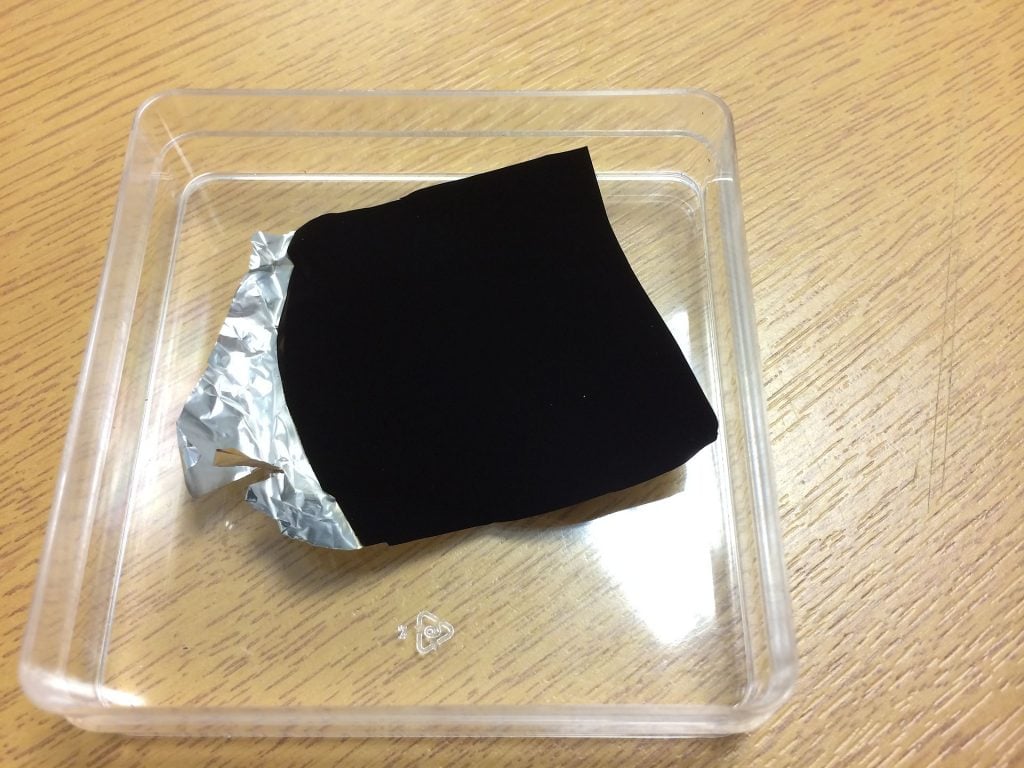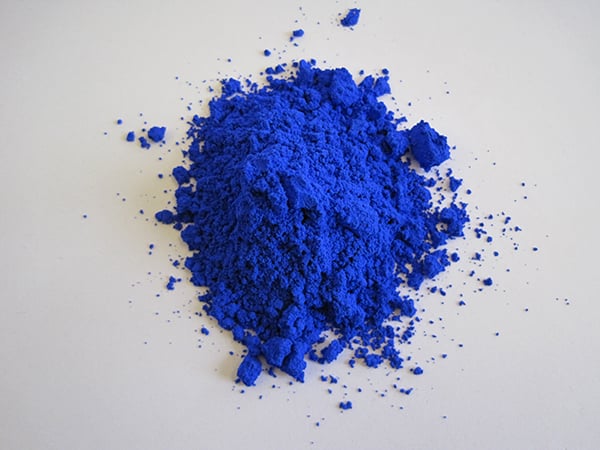Art World
Anish Kapoor Is the Only Artist Who Can Use Vantablack, but Anyone Can See It at the Harvard Art Museums
The world's darkest pigment is apparently museum-worthy.

The world's darkest pigment is apparently museum-worthy.

Sarah Cascone

The Forbes Pigment Collection at the Harvard Art Museums has officially acquired a sample of Vantablack, the newly-invented “super black” that was controversially embraced by Anish Kapoor, the only artist who will be allowed to use it in his work.
While Kapoor is quick to defend himself (he is working with the pigment’s developers to create artistic applications for Vantablack, which was designed with scientific use in mind), the public now has a chance to interact with the blacker-than-black substance, which absorbs up to 99.965 percent of light.
Vantablack is made up of a series of microscopically-tiny carbon nanotubes. When light hits the substance, rather than bouncing back, it gets caught among the dense network of tubes and is converted into heat energy. The Vantablack sample at the museum, for instance, coats the surface of a crushed piece of aluminum, but looks more like a bottomless void.
“It’s not really a pigment,” said Narayan Khandekar, director of Harvard’s Straus Center for Conservation and Technical Studies, speaking to the Harvard Gazette. “It has to be grown on the surface… It’s not a powder that’s mixed with something and then applied.”

Anish Kapoor in Berlin in 2013. Photo courtesy Adam Berry/Getty Images.
The team at Surrey NanoSystems, which invented Vantablack, describes it as a “super-black coating that holds the world record as the darkest man-made substance.”
At Harvard, Vantablack joins samples of about 2,500 synthetic and organic pigments, many of which are on public view in a colorful display case. “We’re constantly looking at newer works of arts that use new pigments, and we need to have standards for comparisons against works so that we can identify what the pigments are,” said Khandekar.
The Forbes Pigment Collection was founded in 1928 by Edward Forbes, then director Harvard’s Fogg Museum, as part of the institution’s research and restoration efforts.

The newly-discovered YInMn blue is now commercially available from the Shepherd Color Company. Courtesy of Oregon State University.
Another recent addition to the collection is YInMn blue, an accidental discovery made by chemist Mas Subramanian and his team at Oregon State University in 2009. The new color is an incredibly brilliant shade of blue, reminiscent of French artist Yves Klein’s eponymous International Klein Blue, and does not fade.